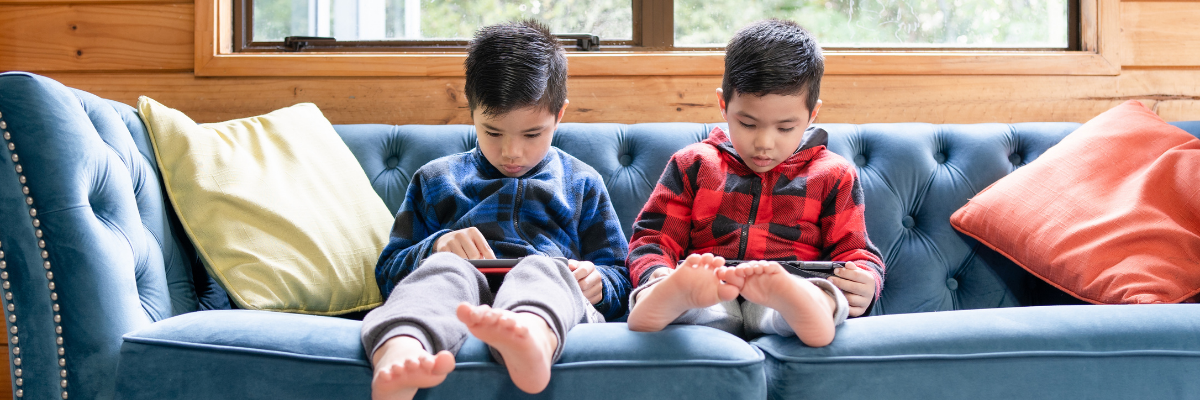Screen Time and Childhood Development
Screens and technology use are becoming more and more common for children. According to the CDC, children ages 8-10 spend an average of 6 hours per day in front of a screen. This increased time spent starring into a screen can have significant effects on a child’s health and development. Young children learn about the world by exploring their environment and watching and modeling others’ behaviors. They learn to foster their imagination and creativity by interacting with toys and others. Increased screen use can have significant effects on this aspect of their development. A new study from Cincinnati Children’s Hospital Medical Center published in JAMA Pediatrics showed concerning evidence that brain structure may be altered in kids with more screen use. Researchers looked at brain MRIs in 47 preschoolers and found that screen time over the American Academy of Pediatric’s recommendations was associated with differences in brain structure in areas related to language and literacy development. Below is a chart with suggested screen time use by age by the American Academy of Pediatrics.

Screen Time and Behavior
While screens can be beneficial teaching tools, great for reward and even better for making those long car rides more bearable, their growing presence means parenting around them has become increasingly challenging. The exciting nature of screen time can trigger the release of dopamine, a feel-good neurotransmitter that makes us associate screens with pleasure and therefore something we want to spend more time with. These dopamine releases make it physically and mentally challenging for kids to put down technology. As a parent, think back to your childhood and how often you were watching a screen. It may have been for about an hour after dinner right? Let’s also think about what you were watching. It was most likely an hour long show that you had to wait until the following week to find out what happened next! Kids today are watching short-lived Youtube videos, 1-3 minute Tik-Toks, scrolling through social media, or binge watching a show with 10 episodes readily available. Research shows that these short clips of fast-paced programming have an immediate, measurable, negative impact on sustained attention and self-regulation. When screens displace activities like outdoor time, play, independent work and social interactions it can result in a kid missing out on valuable caregiver interactions that model and teach emotional regulation. Without those skills, a child might be quicker to anger, become frustrated or shut down.
Negative effects of increased technology use:
- Decreased attention span and/or social interaction skills due to lack of peer interaction and engagement
- Deficits in language and communication skills due to lack of reciprocal dialogue and social interaction
- Difficulty sleeping: The blue light that screens omit, inhibits melatonin; our body’s sleep hormone
- Risk factor for obesity: Engaging in a sedentary activity for extended periods of time increases this risk
Ways to Decrease Screen Time
Tips/ strategies to set boundaries and decrease screen time:
- Keep certain times screen-free (i.e. during mealtimes, bed-time, and family time)
- Set restrictions on the content/ apps that can be accessed
- Co-watch with your child so that the content is educational and appropriate. The parent can also help the child understand what they are watching
- Download games, apps, and YouTube content that are only educational
- Parents can model healthy screen usage by decreasing the amount of time spent on their screens in front of their child
- Set a family curfew for screen-usage (i.e. after 6:00pm, no more screens)
Ways to take movement breaks:
Nowadays increased screen time is more common because of virtual learning and adults working from home. Here are some ways to take a break from the screen and get your body up and moving.
- 5 senses walk pointing out 5 things that you can see, 4 things that you can hear, 3 things that you can touch, 2 things that you can smell, and 1 thing that you can taste
- Wheelbarrow walks across the room
- Animal walks: Bear walks or crab walks
- Jumping jacks
- Crashing or jumping onto couch, mattress, or cushions
Screen-free activities for families:
- Make a fort out of pillows, blankets, chairs, furniture, etc.
- Get outside! There are so many fun activities that can take place outside; go for a walk, ride bikes, sidewalk chalk, water play with a hose or sprinkler, hide and seek
- Karaoke or dance party
- Create a scavenger hunt around the house
- Have a game night
Screen-Free Toys under $22 that promote imaginative play and exploration:


